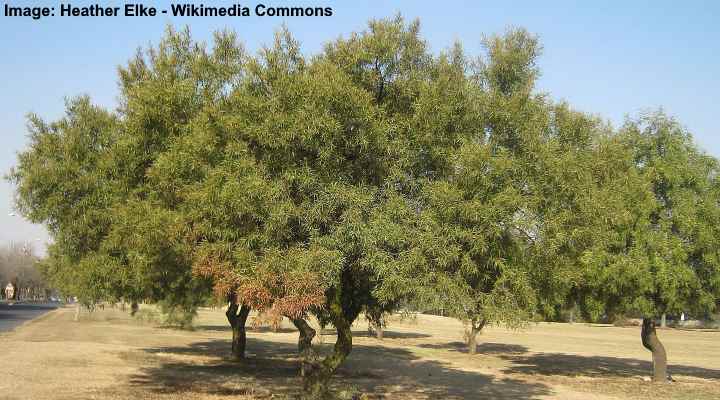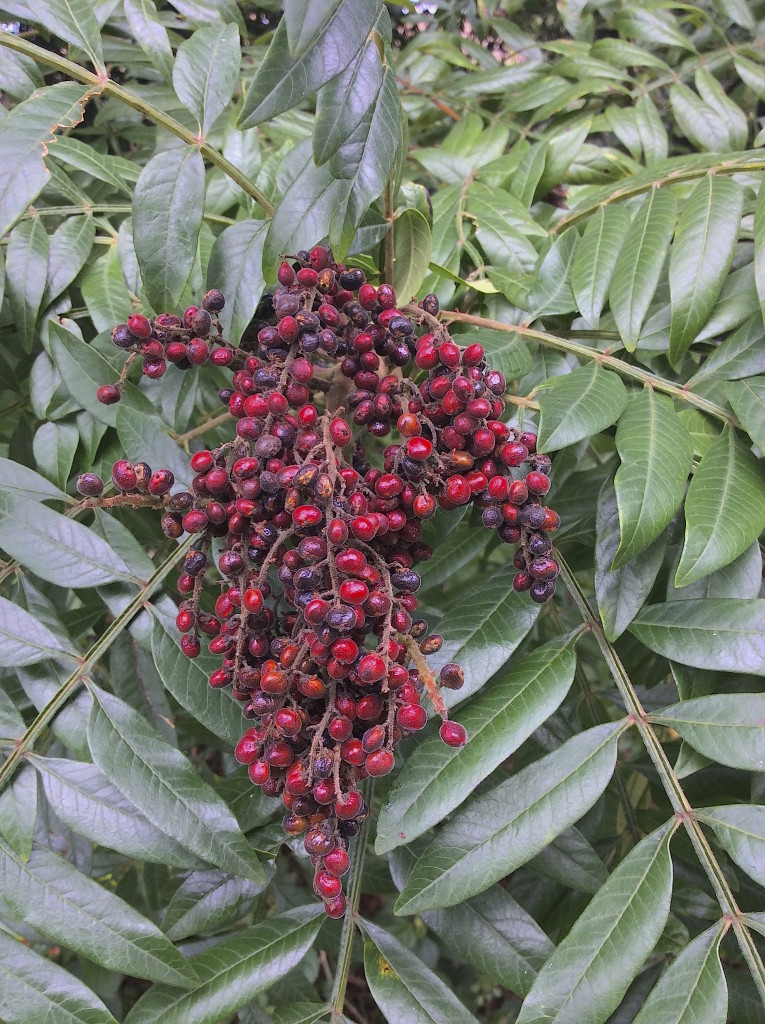african sumac tree poisonous
It may cause milder but similar symptoms to those allergic to it. The easiest way to identify poison sumac Toxicodendron vernix apart from the edible sumac species is by the berries leaves and twigs.

Find Trees Learn University Of Arizona Campus Arboretum
Also people can be allergic to sumac just like everything else.

. Every part of the tree contains urushiol oil which causes an allergic reaction to skin. African sumac Rhus lancea is a drought-tolerant shade tree that grows in US. Every part of the tree contains urushiol oil which causes an allergic reaction to skin.
The tree drops its leaves when it is water stressed has a fungal disease like root rot or from being over fertilized. We have a large non-poisonous sumac tree growing very near our house less than 1 foot away and we have cut it back to a few trunks only to have it sprout out like crazy at the cuts with an abundance of sprouts off the root system on either direction around the perimeter of the house. Some bad native Sumacs or Sumac relatives that you should know about are Poison Ivy Toxicodendron radicans formerly Rhus radicans and Poison Sumac Toxicodendron vernix formerly Rhus vernix.
Poison sumac Toxicodendron vernix inhabits swamps and other wet areas as well as pinewoods and hardwood forests. African sumacs are poisonous to humans. We live in Arvada.
The leaves on a poison sumac shrub have smooth margins whereas nonpoisonous sumac plants have serrated margins. African Sumac Rhus lancea L. Gardeners should never handle the tree without gloves and keep children away from the plant.
Id avoid planting it where puppies might be tempted to nibble on the foliage or berries it produces. It may cause milder but similar symptoms to those allergic to it. Branches are reddish to brownish-gray.
African sumac which is actually the same genus as poison oak is considered poisonous. Older specimens the dark gray bark has fissures that show beautiful reddish and orange mahogany color hues. Sumac family Anacardiaceae Description.
African sumacs are poisonous to humans. Allergic dermatitis in humans usually not a problem in animals. The African Sumac attracts bees and it is also poisonous to humans.
Gardeners should never handle the tree without gloves and keep children away from the plant. Every part of the tree contains urushiol oil which causes an allergic reaction to skin. African sumac which is actually the same genus as poison oak is considered poisonous.
African sumacs are poisonous to humans. While poisonous sumac Toxicodendron vernix has a well-established reputation as one of several plants that cause skin irritation there are many other types of sumac trees Rhus spp that are. Poison Ivy Poison Oak.
Poison sumac which grows in the Eastern US has white or gray berries where edible sumac has red brown purple or maroon fruit. Department of Agriculture Plant Hardiness Zones 8 through 10. Id avoid planting it where puppies might be tempted to nibble on the foliage or berries it produces.
Has a graceful weeping form and dark fissured bark. Poison ivy Toxicodendron radicans. But its a close relative of poison ivy Toxicodendron radicans.
Slow growing single or multi-stemmed evergreen tree 15 to 30 feet tall. You need to be aware of this when you eat sumac for the first time. Whereas poison sumac is known to botanists as Toxicodendron vernix staghorn sumac is classified as Rhus typhina.
Both plants can be responsible. African sumacs are poisonous to humans. Poison sumac is actually more closely related to two other poisonous plants than it is to staghorn sumac.
Refrain from burning any part of the tree. Skin contact with the oil of a poison sumac plant leads to an itchy burning. Every part of the tree contains urushiol oil which causes an allergic reaction to skin.
No African sumac Rhus lancea isnt poisonous to animals. Karee tree African sumac or willow rhus safety TheLastGreen Dec 7 2021 Dec 7 2021 1 TheLastGreen Well-Known Member Joined Aug 3 2021 Messages 564 Location City andor State Johannesburg I need help with making sure this tree is safe. The very genus name of poison sumac indicates its toxic nature.
Gardeners should never handle the tree without gloves and keep children away from the plant. Poison sumac berries are typically white whereas edible sumac berries are bright red. Are African sumac trees poisonous.
Verticillium wilt is found in the soil of tropical and temperate regions especially where summers do not become too hot. Non-Toxic to Dogs Non-Toxic to Cats Non-Toxic to Horses. The fungus that causes verticillium wilt does attack African sumacs.

Rhus Lancea African Sumac Karee Western Karee Willow Rhus Southeastern Arizona Wildflowers And Plants
Tree Of The Week Use The African Sumac For Shade Or Perhaps To Make Beer

Xtremehorticulture Of The Desert African Sumac Too Close To A Wall
African Sumac English 130 Group 1

Gv Gardeners African Sumac Trees Now Abuzz Get Out Gvnews Com

Sumac Trees Types Leaves Berries Pictures Identification Guide
African Sumac English 130 Group 1

Sumac More Than Just Native Lemonade Eat The Weeds And Other Things Too